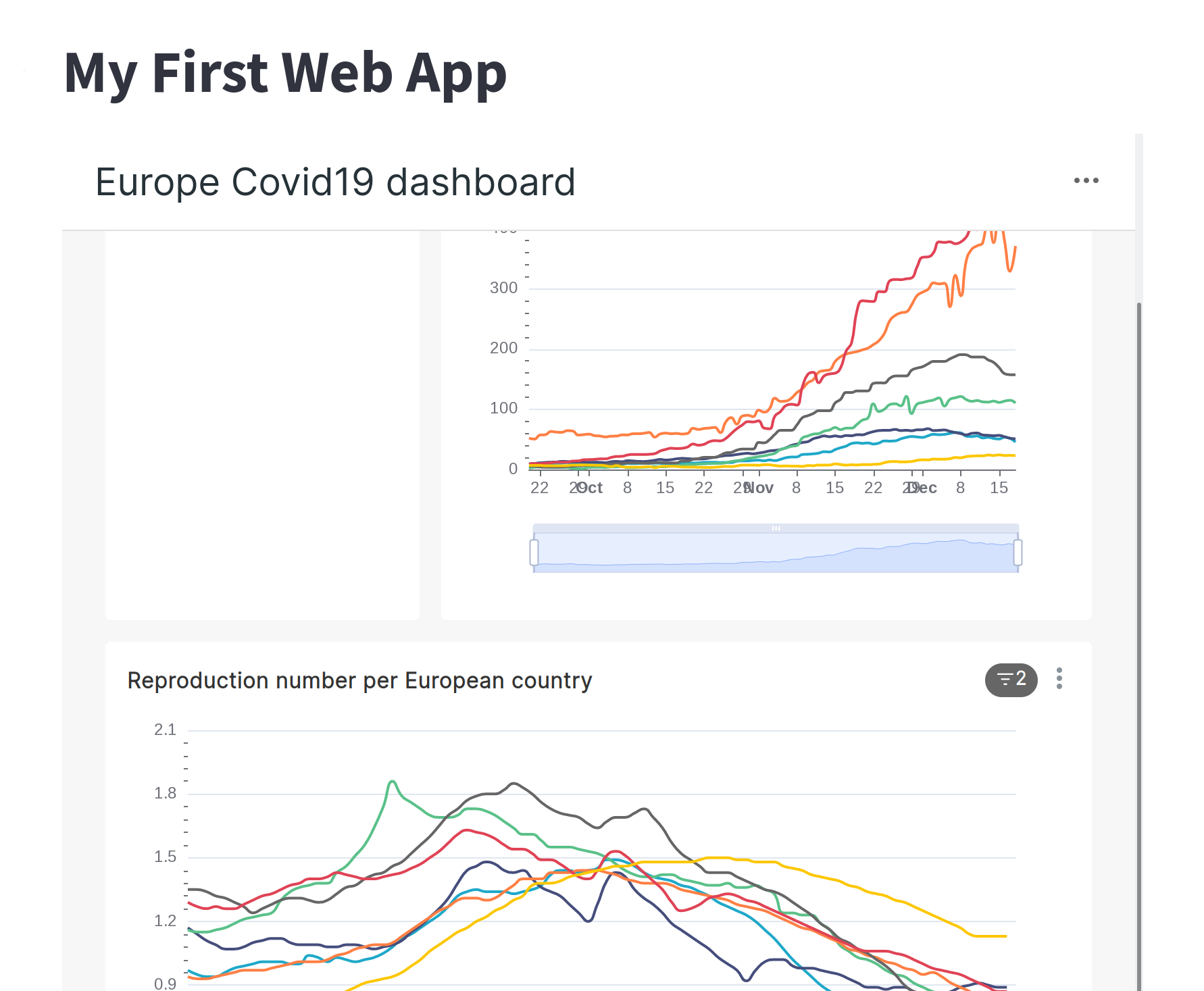Building Web-apps based on the Hub¶
It is possible and very easy to build simple web applications based on the EpiGraphHub platform. For simplicity we will refer to these applications as Hub apps in this document.
General Guidelines¶
All Hub apps, must be developed in their own reposotory under the The Graph Network GitHub organization.
The app code, independently of the framework used, should be written and configured to work in you local development computer, assuming that the epigraphhub database is available on localhost which can be achieved through the activation of the SSH tunnel as decribed here. Having the code ready to runas a local app, will help our deployment engineers to configure CI and CD of the app in the EpigraphHub server.
Examples¶
The examples that will be explored in this tutorial are dashboard-like, but go one step further than the interactive dashboards that can be created using the standard web interface of EpiGraphHub. This extra step is the ability to run custom code in the background of you dashboard, beyond just simple figure manipulation. But we will still be able to take advantage of the interactive graphs and dashboards created and published through EpiGraphHub’s web interface.
Streamlit-based apps¶
We will start this tutorial building an app based on Streamlit, one of the fastest ways to build data apps available today.
Embedding a dashboard¶
Let’s take A simple dashboard developed and published in EpiGraphHub. In order to embed it in a very simple Streamlit app: Would require these lines of code:
import streamlit as st
"# My First Web App"
st.components.v1.iframe("https://epigraphhub.org/superset/dashboard/9/?standalone=true",
width=800, height=800, scrolling=True)
Once you write the lines of code above, save them as myapp.py. Then you can run it locally like this:
$ streamlit myapp.py
You will be able to see your app in the browser.

The simple command above allows you to test your app before you deploy it on the server.
Streamlit allows for writing much more detailed application, and you should refer to its documentation for more information. But by using streamlit on top of EpiGraphHub, will allows you to easily connect to EpiGraphHub’s databases, perform queries and create any visualizations you may want.
Deploying your App¶
When your app is ready to deploy, Just push it to a github repository, and open an issue on the EpiGraphHub repository descrcibing your app and why you want to deploy it on our server. Label the issue App deploy request.
One of our developers will respond to the issue queueing it for deployment. Once the app is deployed, Every time you push an update to the main branch of your app github repository, it will be automatically redeployed on our servers.